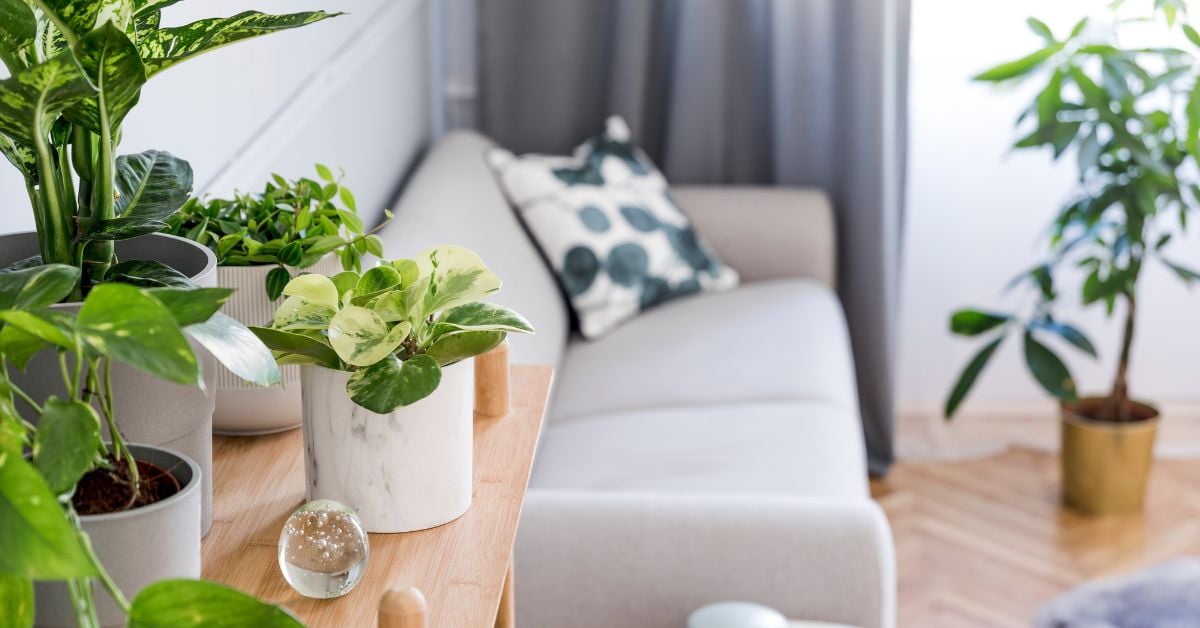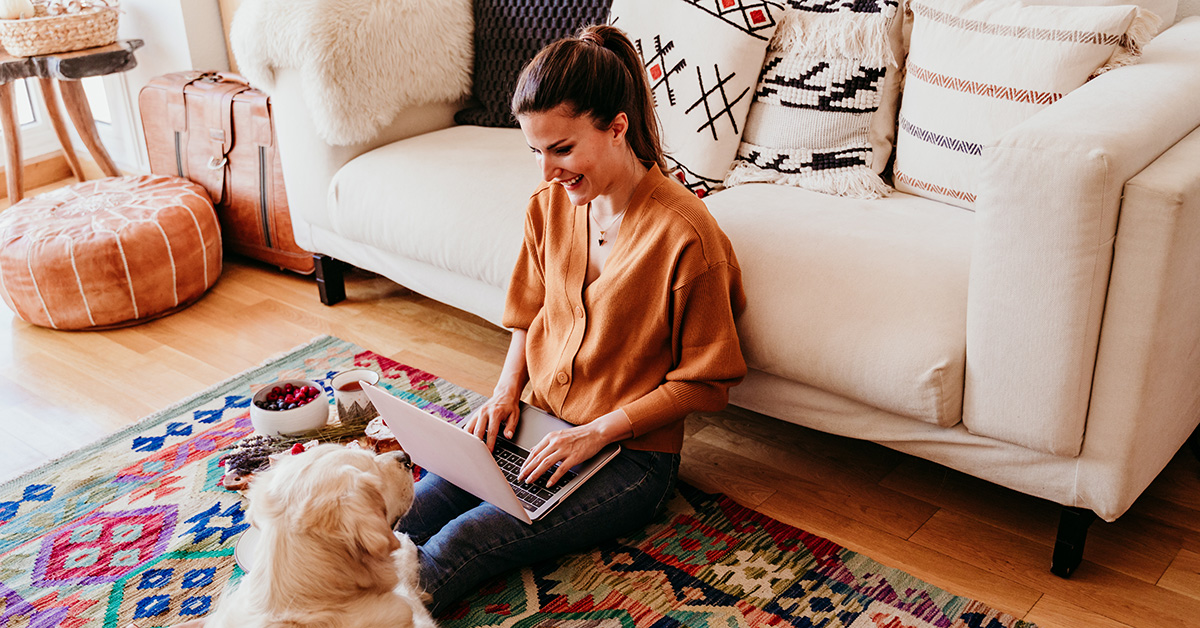A Guide To Adding Plants To Your Home

Indoor plants have become an important part of interior decorating, and with good reason. Adding plants to your home has been shown to have many health benefits, such as lifting moods and reducing stress.
Even better, most varieties only need watering every one to three weeks. So they deliver a lot of positivity for little commitment. And they look fabulous too!
Why are plants good for your home?
Being outdoors is known to boost our wellbeing, so it makes sense bringing a little piece of nature inside can have a similar effect.
It can even help the air you breathe. A study by RMIT and the University of Melbourne found that adding one medium-sized pot plant to a medium-sized room improved air quality by 25 per cent.
The research was commissioned by Plant Life Balance, a program designed to get people excited about styling their home with plants, funded by Hort Innovation. It also reported improved wellbeing, with five or more plants leading people to feel healthier and happier. A good reason to make it a part of your décor!
Caring for an indoor plant may seem like a chore, but it has an upside. Watering or wiping down leaves requires time away from screens and promotes mindfulness.
Plants can also improve concentration and productivity, so they are a must-have in your home office space. In addition, leafy foliage gives the eyes a much-needed break from technology and recharges the senses.
And don't forget to include one in your bedroom as it could help you to drift off at night. For example, lavender is well-known as a natural sleep aid. Aloe Vera can improve air quality, jasmine aids relaxation, and peace lilies increase humidity. Adding plants to your home is another way of creating a 'zen' home.
How to decorate your home with indoor plants
The idea of creating a tropical sanctuary in your home may be tempting, and decorating with plants is somehow simple. But if you are just beginning to flex your green thumb, start small and incorporate plants slowly.
Look for plants that work together and will suit your interior. For instance, a golden cane palm or fiddle leaf fig will complement a coastal vibe. On the other hand, if you are after a more boho look, try a cactus. You'll find plenty of inspiration on social media apps.
The old interior 'rule of three' is ideal for indoor plants. Mix up the size and shapes to make it visually interesting. Pop one in a basket or add a planter stand and follow care instructions when positioning – some plants hate direct sunlight. Hanging plants are also great, particularly in the kitchen, in the bathroom or in a small space. On the other hand, an eye-catching large plant can create a great focal point in a living room for example.
Remember that not all varieties are child-friendly, so double check before purchasing.
Top 5 plants for your home
Big or small, there are so many plants to add to your own indoor sanctuary. Some are more popular than others and suitable for a range of skills. Here's our Top 5 and the reason why:
- The zanzibar (zamioculcas zamifolia) is an incredibly resilient plant requiring little care. It has glossy green leaves with a beautiful shape.
- A spider plant (Chlorophytum) is a 70's retro classic back in vogue. Position it in a bright place, but not in direct sunlight. It can tolerate longer periods of dryness.
- The boston fern (nephrolepis exaltata) is a popular and child-friendly indoor plant that prefers some humidity and sunny position. Note that it needs the soil to stay moist.
- A snake plant or mother-in-law's tongue (sansevieria trifasciata) is a great first choice as it requires little care. It comes in a variety of species and patterned leaves.
- The devil's Ivy (eipremnum aureum) is also a great starter plant as it can survive with little sunlight and water. However, make sure to avoid it if you have children as it is poisonous.
Real versus artificial plants
Chances are you might not even be able to detect a fake plant from a real one. High-quality replicas have become incredibly detailed with leaf tears and crinkles that make it look just like the real thing. Those created from silk even feel life-like.
Faux plants are perfect for allergy sufferers or those who just simply have zero gardening skills. Importantly, they are also safe for pets and children.
However, they still require some maintenance as they can become dust collectors. So be sure to wipe down the leaves and base regularly.
You will soon discover indoor plants are highly addictive. It is hard to stop at just one, and they will make your home feel like a sanctuary.



